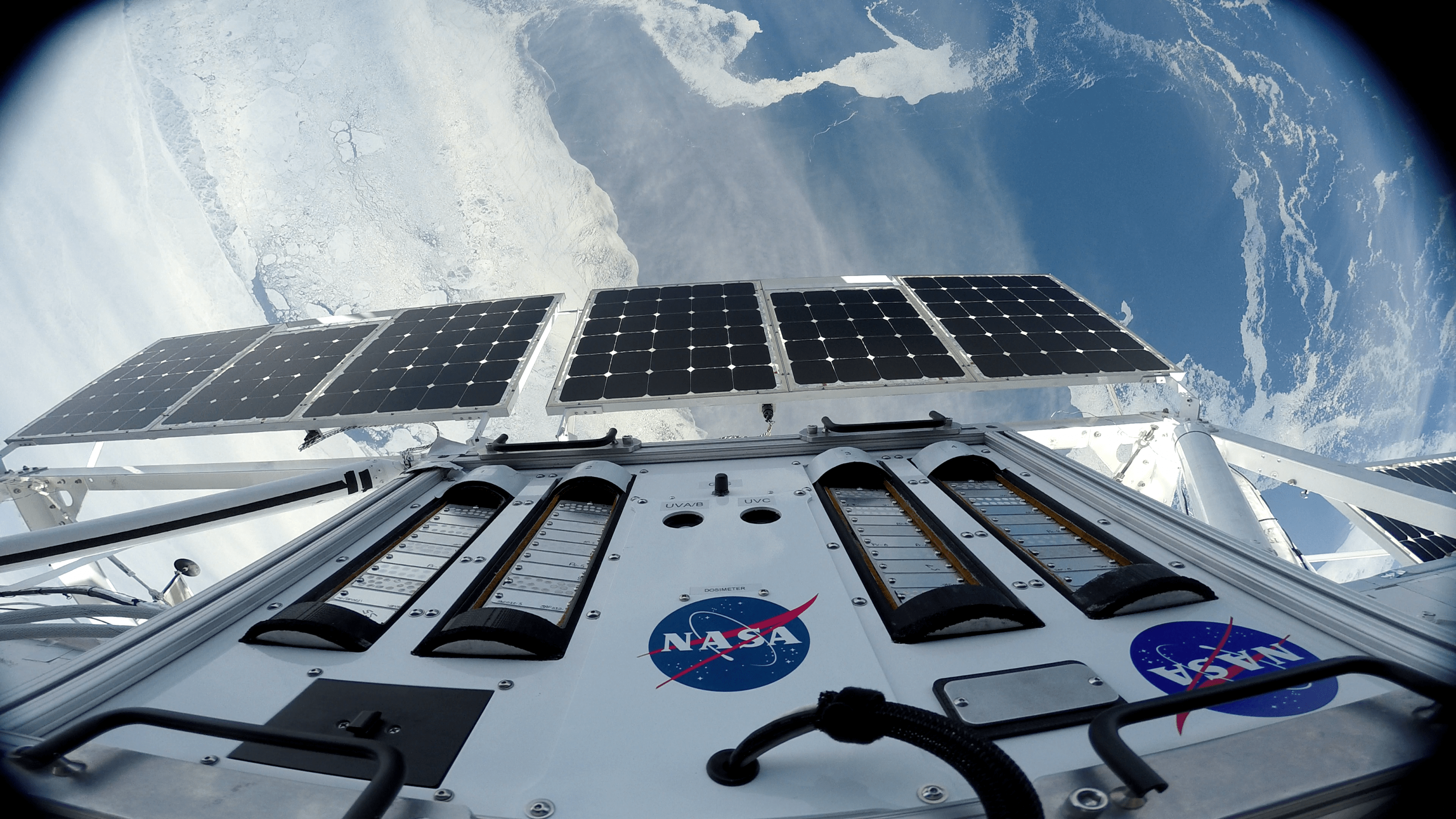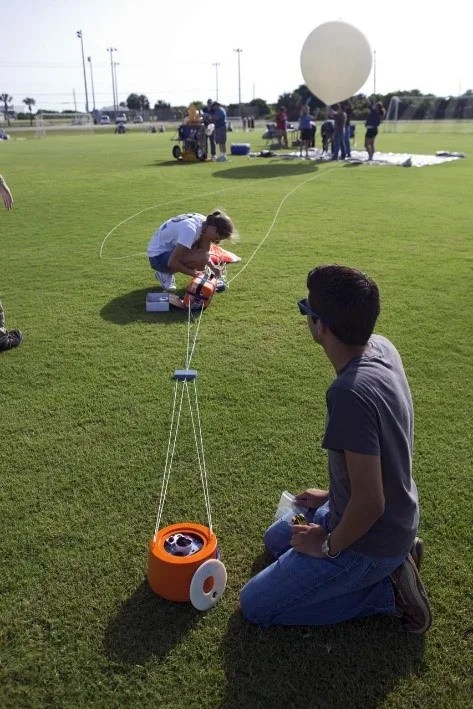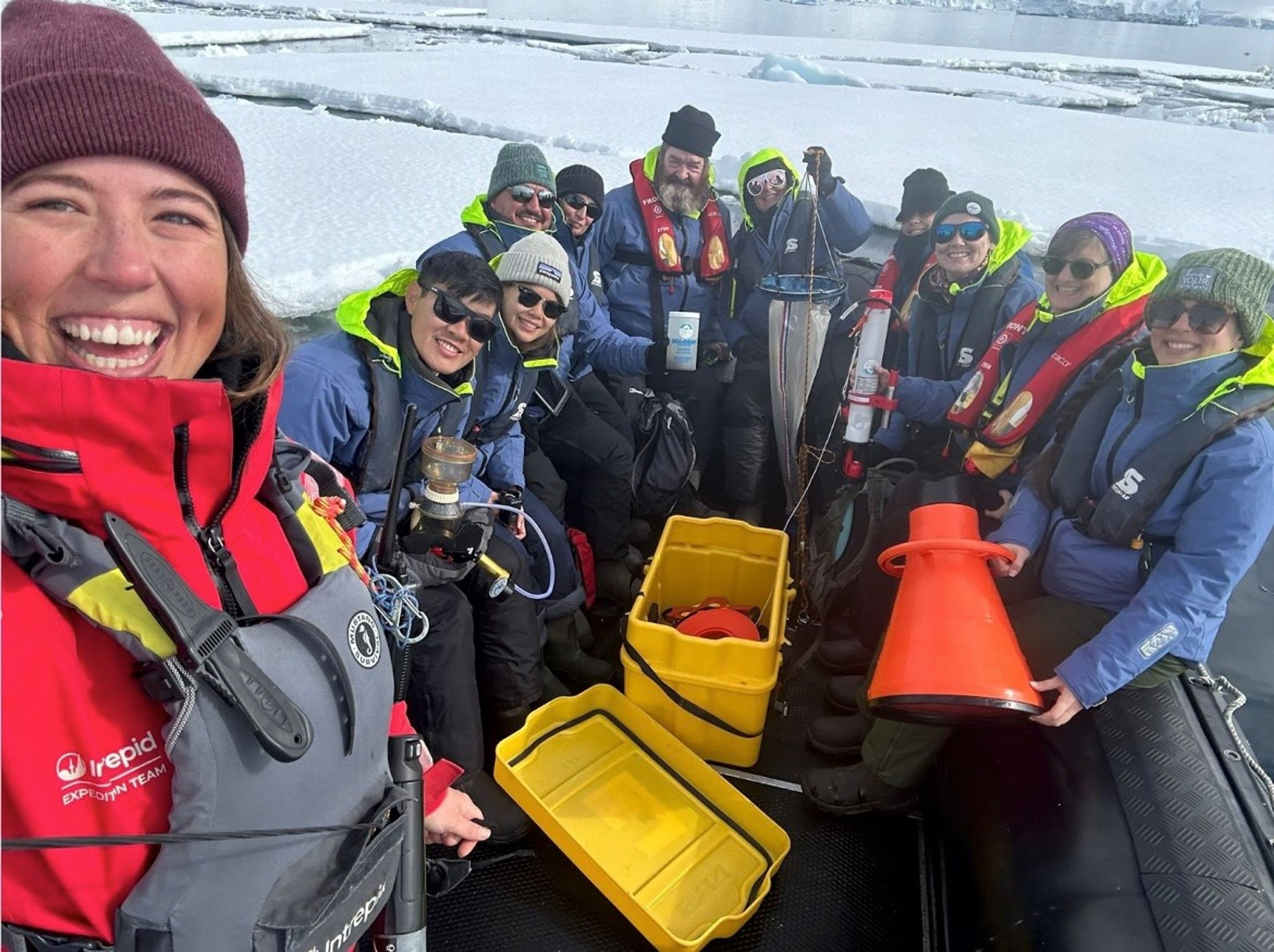9 min read
Balloons are often associated with meteorological studies—gauging weather conditions such as temperature, pressure and humidity in the Earth’s atmosphere. But for NASA and other scientists, they also serve as a stepping-stone for other critical space research.
More recently, biological sciences researchers have started using balloons as an experimentation platform. In the context of NASA’s planned Artemis and Mars missions, access to “near space” can advance scientists’ understanding of how biological organisms respond to extreme environments analogous to those found on the Moon and Mars. High-altitude and scientific balloons provide experimental access to various levels of rarefied air, as far up as the stratosphere (above 99% of the atmosphere). This enables researchers to gain initial data about the effects of higher levels of radiation and other factors on biological systems in a more cost-effective and timely manner than if they were to wait for an opportunity to run their experiments on the International Space Station or other orbital platforms.
Balloons come in many forms, ranging from the off-the-shelf models used by students and educators to scientific ones as large as a football stadium utilized by academic researchers and industry. This article will describe some of the ways that these balloons are helping to advance biological sciences research and support space exploration.
Small high-altitude balloons, also known as meteorological or weather balloons, are a low-cost, fast-track option for experiments that require frequent repetition. Often used by students and educators, missions are short-lived, lasting until the balloon bursts during ascent, which is typically one to four hours after being released. NASA also uses small high-altitude balloons as well. One key difference, however, is that NASA’s balloons, regardless of size, are made from polyethylene film whereas weather balloons are made of rubber.

Payloads are also small, up to 12 pounds suspended in two packages, and subject to landing wherever the wind may take them. Additionally, given that balloons are uncrewed, experiments must be designed in a way to run independently of human control and may be developed and flown in a matter of weeks using commercially available products and applications.
“With some basic knowledge about mission architecture and how to reliably recover a payload, balloon teams can do some really impactful work that would require more time and resources through traditional space-study flight opportunities,” says David J. Smith, director of the Aerobiology Lab at NASA’s Ames Research Center. “And it’s exciting to see the new ways that students are using them to study biological phenomena here on Earth as well.”
For example, in the summer of 2018, California wildfires were rampant. College interns with the Space Life Sciences Training Program (SLSTP) at NASA’s Ames Research Center saw an opportunity to study the effects of the wildfires on airborne microbiomes, such as bacteria, viruses and fungi.
One of the interns, Tristan Caro, now a doctoral candidate with the University of Colorado Boulder, drew inspiration from research findings he’d read about, published by Smith. “I came across something that I thought was really unique, which was people studying how microbes survive in the high atmosphere,” says Caro. “This seems very unintuitive because when you're flying on a plane, for example, you look out the window and there's just nothing, maybe there are some clouds below, but it's basically just void.”
Smith’s research had discovered intact bacterial spores and cells that had traveled from Asia across the Pacific Ocean to North American via dust plumes. “It got us thinking about the possibility that the smoke might be lofting microbes up into the air,” says Jordan McKaig, one of the interns and president of the student board of the American Society of Gravitational and Space Research (ASGSR). “We wanted to see if the microbes could survive the extreme conditions and possibly travel with the weather patterns.”
The team, therefore, set out to design the experiment and gather the materials necessary to build a payload. It required an interdisciplinary approach, bringing together life sciences, engineering and computer programming. “Success can depend on how you build your payload and what type of electronics you need to put on it,” continues Caro. “We chose an Arduino, which is a tiny, inexpensive computer you can buy online—it essentially taught me how to code, which has become a really valuable skill for my research.”
Once the team was ready, they notified the local Federal Aviation Administration (FAA) of their launch plans. Although the payload didn’t exceed the threshold weight and technically didn’t require FAA clearance, the SLSTP team still followed protocol, as balloon trajectories are unpredictable.
There are other variables that can affect the outcome of a balloon experiment as well. With the SLSTP project, the first balloon landed in a 100-foot-tall redwood tree and wasn’t recoverable for weeks; a second balloon launched one week later was recovered but failed to collect samples. “Failure has to be an option,” continues McKaig. “If you're not making some mistakes with your science, you’re probably not taking enough risks. But because small balloons are relatively inexpensive and easy to do, you’re able to take more of them.”
In short, small meteorological balloons are a relatively easy and affordable way to conduct life-science experiments, further STEM education and excite rising generations of scientists. Whereas smaller meteorological balloons provide a valuable entry point for students and educators, larger scientific balloons provide the next level of experimental access for professional researchers.
Learn more: NASA’s Scientific Balloon Program
Plants will play a crucial role in enabling space exploration by providing a sustainable source of nourishment for the crew as well as offer the psychological benefits that come with being in the proximity of greenery. Growing plants in space, however, will require a deeper understanding of how these living organisms respond to extreme environments, including radiation. That’s where NASA’s facility in Antarctica can offer researchers the most robust balloon research platform for preparing deep-space experiments. Support for the Antarctic campaign is provided by the National Science Foundation Office of Polar Programs.

“Not since the Apollo era have seeds made it outside of the Van Allen belts to sample radiation,” says Robert Ferl, distinguished professor and director of horticultural sciences at the University of Florida. “And it's been 50 years since we've studied the effects of that very real radiation on our biological systems. We can learn by putting plants in extreme environments that are more accessible to us, such as high altitudes at the magnetic pole in Antarctica, where the radiation is most analogous to Mars’. This prepares us to take humans and our biology off planet.”
“Plants are what will allow humans to travel past the capacity of a picnic basket,” adds Anna-Lisa Paul, research professor in horticultural sciences and director of the Interdisciplinary Center for Biotechnology Research at the University of Florida and NASA space biology research scientist. “So, when we leave Earth's orbit, we must take plants with us. Understanding how plants respond to spaceflight environments is the kind of thing that not only excites us as fundamental researchers, but also as people who want to see humanity take that next step in exploration.” Both Ferl and Paul are NASA-funded principal investigators in space biology research.
However, given the remoteness and logistical challenges of the Antarctic location, flight opportunities are scarce and highly competitive. Those who earn the privilege of flying on one of the Antarctic missions—typically one or two missions per year—also benefit from prolonged exposures to space-like conditions because of the way ionizing radiation spills into the Earth’s polar atmosphere.
Since the cold and radiation conditions afforded by the southern pole can provide valuable insights into how these microbes might behave in space, researchers also use the location to study extremophilic microbes—organisms such as spore-forming bacteria—and learn critical information about how spacecraft “stowaways” might affect the health of astronauts or planetary environments inadvertently encountered.
In addition to extreme cold, dryness and near-vacuum conditions at float, many other factors make missions launched from Antarctica unique and advantageous to researchers seeking space-like exposures. Firstly, there’s a consistent source of power. The summertime Antarctic sun doesn't dip below the horizon, so balloons equipped with solar panels get continuous power to their payloads, which can enable missions to last weeks, and even months.
Secondly, Antarctica’s stratospheric wind patterns offer a level of predictability for the balloon’s path. The jet stream reliably flows in a circle around the continent during the austral summer, so that when the helium-filled balloon goes up and starts to drift, it often circles back near the location from which it was launched around eight to 14 days later. This reduces the level of effort required to recover payloads landing on the Antarctic ice.
And thirdly, the radiation quality is different. The Earth’s magnetic fields around the planet allow for incoming solar and galactic radiation to funnel into the poles. This establishes radiation levels much closer to what would be encountered in deep space, so researchers are able to conduct experiments within “natural” environments rather than man-made settings.

The benefits are considerable, but the path to Antarctica can be long and complex. Payloads typically start their journey south in July, fly in December or January and begin the trip home in April or May. The nearly year-long process means that the experiments must be resilient enough to withstand long periods in a form of stasis.
Balloons can be a valuable platform for biological researchers. For students and educators, smaller meteorological balloons offer an easy, cost-effective way for furthering STEM education. For professional biologists looking to measure how microbes or plant seeds respond to space conditions, larger scientific balloons enable robust radiation exposures. And for technologists hoping to eventually test payloads or instruments on the space station, larger balloons provide a coveted opportunity for quickly maturing hardware.
Stay informed on space biology & physical sciences research: Space Experiments
For daily updates, follow @ISS_Research, Space Station Research and Technology News or our Facebook. Follow the ISS National Lab for information on its sponsored investigations. For opportunities to see the space station pass over your town, check out Spot the Station.






